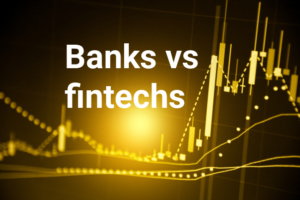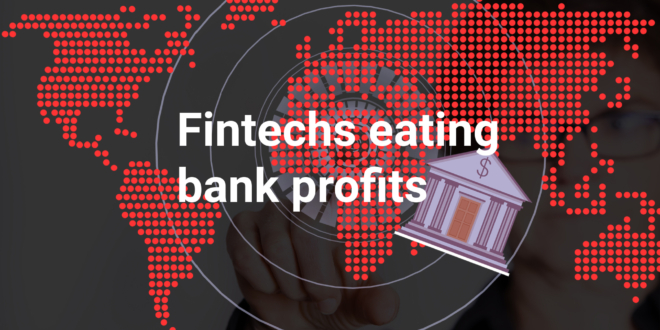By Michael Engel, Managing Director & VP of Payments at Diebold Nixdorf
Payments are a critical piece of a financial institution’s value proposition. Payments represent nearly a third of revenue at most banks and the largest share of bank interactions with customers. However, over the last ten years, non-traditional players such as neo-banks, fintechs and big tech have reshaped the payments space, fueling innovation while steadily chipping away at a vital profit pool for traditional banks.
Over 300 global fintech companies have achieved “unicorn” status with a valuation of over $1 billion. While valuations may experience a roller-coaster ride as the industry matures, fintechs now capture about 5% of banking revenues in the US and as much as 20% in payments-related services and solutions – which indisputably makes them a force to be reckoned with long term. The investments in these fintechs have fueled continued payment innovation while reinforcing customer expectations for frictionless, embedded payment experiences and new payment methods.
Contactless payments continue to rise after the COVID-19 pandemic, and real-time payments could account for almost 20% of all global electronic payment transactions by 2025. Buy Now Pay Later is reinventing lending at point of sale and is projected to account for 25% of the unsecured lending market in the US by 2026. While the crypto market has proven to be volatile, central banks across the globe continue to contemplate plans to issue Central Bank Digital Currencies. This is an unprecedented time of innovation and change, and banks cannot afford to lose pace.
Traditional banks have the tools to compete with fintech and big tech payment providers

Almost half of today’s consumers exclusively use digital channels to manage their finances and pay their bills. It would be fair to wonder whether traditional brick-and-mortar banks still have a role to play in today’s world, but despite all the changes in the industry, they are still vital to the future of banking and payments.
Banks still possess considerable competitive advantages thanks to their customer populations and relationships, which include historical data and additional services (e.g., mortgage lending). Additionally, banks are better positioned to meet consumer demand for seamless omnichannel payment experiences. Banks have the infrastructure to support different payment methods (such as card, ACH, cheque, and other digital payment methods) and can potentially offer better rates than fintechs since they don’t rely on payments as their sole revenue and profit driver.
The COVID-19 pandemic highlighted the resiliency and reliability of the payments space, leading to attractive returns and valuations of pure-play payments businesses. It’s not a surprise that we see banks stepping up their focus on merchant acquisition and other payment services despite the increase in fintech activity.
Modernized infrastructure is key to thriving in the new world of payments

Banks shouldn’t need to think twice about deploying new lines of business given the potentially attractive economic model they can tap into. For example, offering integrated, instant payment solutions and the agility to integrate into any consumer journey will allow banks to maintain control over the customer relationship. It also opens up the opportunity to generate affiliate upselling of instant credit products for consumer investments. Equally important, having services like instant payments and Request to Pay ensures that banks remain attractive to merchants and top of their consumers’ wallets while maintaining critical transaction volume and touchpoints.
That said, banks still have their work cut out for them if they intend to take advantage of these opportunities and effectively compete in the rapidly evolving world of payments. Aging and inflexible technology infrastructure makes adding new services and adapting to new regulatory requirements cumbersome and expensive.
If banks want to ensure that they can compete with challenger fintechs saturating the payments arena, they will need to modernize their siloed and monolithic infrastructure with a modern, cloud-native set of services that prioritizes agility. With each passing year, there are fewer and fewer experts able to make changes to legacy technology, making it all the more important to act fast.
Innovate or fall farther behind

Whether banks look to pursue these opportunities for innovation on their own or opt to leverage partnership models with fintechs, a bank’s infrastructure must allow for quick and easy deployments. Embracing new services and payment options requires banks to modernize their technology infrastructure, embrace the cloud-native paradigm, improve cybersecurity, and drive an API strategy that accommodates the new world of open banking. Only then will they be able to generate the additional revenue streams these opportunities offer.
Building future-ready solutions will require banks to commit to modernizing their core banking and payment platforms. Fortunately, the same fintech revolution that threatened to displace the traditional bank has also given birth to new companies whose sole focus is to build modern solutions for traditional banks. These innovative, cloud-native and microservices-enabled solutions allow banks to comfortably migrate off from their monolithic applications as slowly or rapidly as they choose. Given the new options to minimize risk while improving their agility and efficiency, this is an exciting time to be in banking and payments for banks primed to act.
About the Author

Michael Engel is Managing Director and VP of Payments at Diebold Nixdorf. Based in Utrecht, Netherlands, he is responsible for the global growth of the company’s software business with a specific focus on retail banking payment solutions. He works with customers and partners to transform banks into more agile, IT-driven organizations around the globe. Michael is a frequent speaker at industry events and seminars on the subjects of retail banking transformation, payments and cloud native solutions as part of an open API driven banking environment.
Recent PaymentsNEXT news:
Preparing for friendly fraud in an era of record debt








LET’S CONNECT